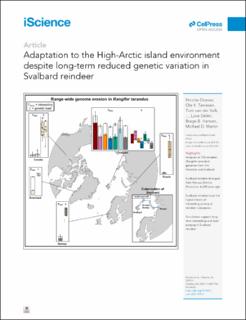| dc.contributor.author | Dussex, Nicolas | |
| dc.contributor.author | Tørresen, Ole Kristian | |
| dc.contributor.author | van der Valk, Tom | |
| dc.contributor.author | Le Moullec, Mathilde | |
| dc.contributor.author | Veiberg, Vebjørn | |
| dc.contributor.author | Tooming-Klunderud, Ave | |
| dc.contributor.author | Skage, Morten | |
| dc.contributor.author | Garmann-Aarhus, Benedicte | |
| dc.contributor.author | Wood, Jonathan | |
| dc.contributor.author | Rasmussen, Jacob Agerbo | |
| dc.contributor.author | Pedersen, Åshild Ønvik | |
| dc.contributor.author | Martin, Sarah Louise | |
| dc.contributor.author | Røed, Knut | |
| dc.contributor.author | Jakobsen, Kjetill Sigurd | |
| dc.contributor.author | Dalén, Love | |
| dc.contributor.author | Hansen, Brage Bremset | |
| dc.contributor.author | Martin, Michael David | |
| dc.date.accessioned | 2024-01-18T12:11:17Z | |
| dc.date.available | 2024-01-18T12:11:17Z | |
| dc.date.created | 2023-09-20T09:29:42Z | |
| dc.date.issued | 2023 | |
| dc.identifier.citation | iScience. 2023, 26 (10), . | en_US |
| dc.identifier.issn | 2589-0042 | |
| dc.identifier.uri | https://hdl.handle.net/11250/3112479 | |
| dc.description.abstract | Typically much smaller in number than their mainland counterparts, island populations are ideal systems to investigate genetic threats to small populations. The Svalbard reindeer (Rangifer tarandus platyrhynchus) is an endemic subspecies that colonized the Svalbard archipelago ca. 6,000–8,000 years ago and now shows numerous physiological and morphological adaptations to its arctic habitat. Here, we report a de-novo chromosome-level assembly for Svalbard reindeer and analyze 133 reindeer genomes spanning Svalbard and most of the species’ Holarctic range, to examine the genomic consequences of long-term isolation and small population size in this insular subspecies. Empirical data, demographic reconstructions, and forward simulations show that long-term isolation and high inbreeding levels may have facilitated the reduction of highly deleterious—and to a lesser extent, moderately deleterious—variation. Our study indicates that long-term reduced genetic diversity did not preclude local adaptation to the High Arctic, suggesting that even severely bottlenecked populations can retain evolutionary potential. | en_US |
| dc.language.iso | eng | en_US |
| dc.publisher | Elsevier B. V. | en_US |
| dc.rights | Navngivelse 4.0 Internasjonal | * |
| dc.rights.uri | http://creativecommons.org/licenses/by/4.0/deed.no | * |
| dc.title | Adaptation to the High-Arctic island environment despite long-term reduced genetic variation in Svalbard reindeer | en_US |
| dc.title.alternative | Adaptation to the High-Arctic island environment despite long-term reduced genetic variation in Svalbard reindeer | en_US |
| dc.type | Peer reviewed | en_US |
| dc.type | Journal article | en_US |
| dc.description.version | publishedVersion | en_US |
| dc.source.volume | 26 | en_US |
| dc.source.journal | iScience | en_US |
| dc.source.issue | 10 | en_US |
| dc.identifier.doi | 10.1016/j.isci.2023.107811 | |
| dc.identifier.cristin | 2176832 | |
| dc.relation.project | Norges forskningsråd: 315454 | en_US |
| dc.relation.project | Norges forskningsråd: 326819 | en_US |
| dc.relation.project | Sigma2: NN8052K | en_US |
| dc.relation.project | Sigma2: NN8013K | en_US |
| dc.relation.project | Norges forskningsråd: 325589 | en_US |
| dc.relation.project | Norges forskningsråd: 276080 | en_US |
| dc.relation.project | Norges forskningsråd: 223257 | en_US |
| dc.relation.project | Vetenskapsrådet: 2022-06725 | en_US |
| dc.relation.project | Vetenskapsrådet: 2018-05973 | en_US |
| dc.source.articlenumber | 107811 | en_US |
| cristin.ispublished | true | |
| cristin.fulltext | original | |
| cristin.qualitycode | 1 | |

